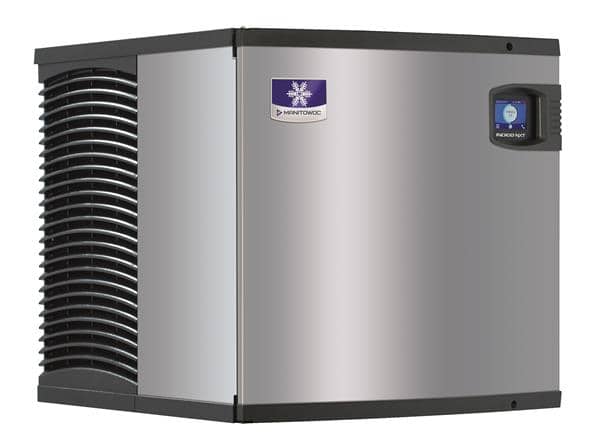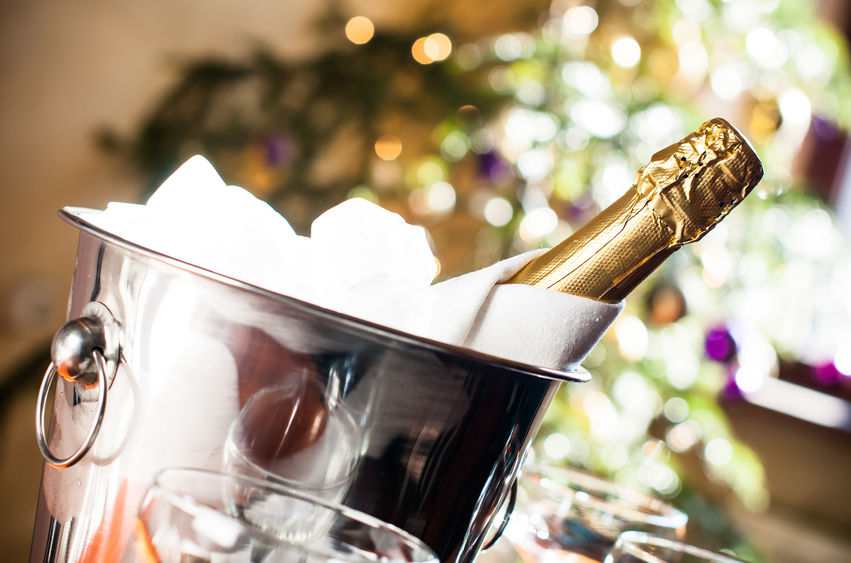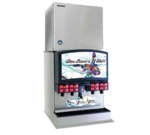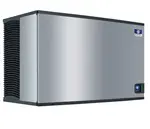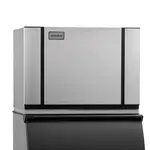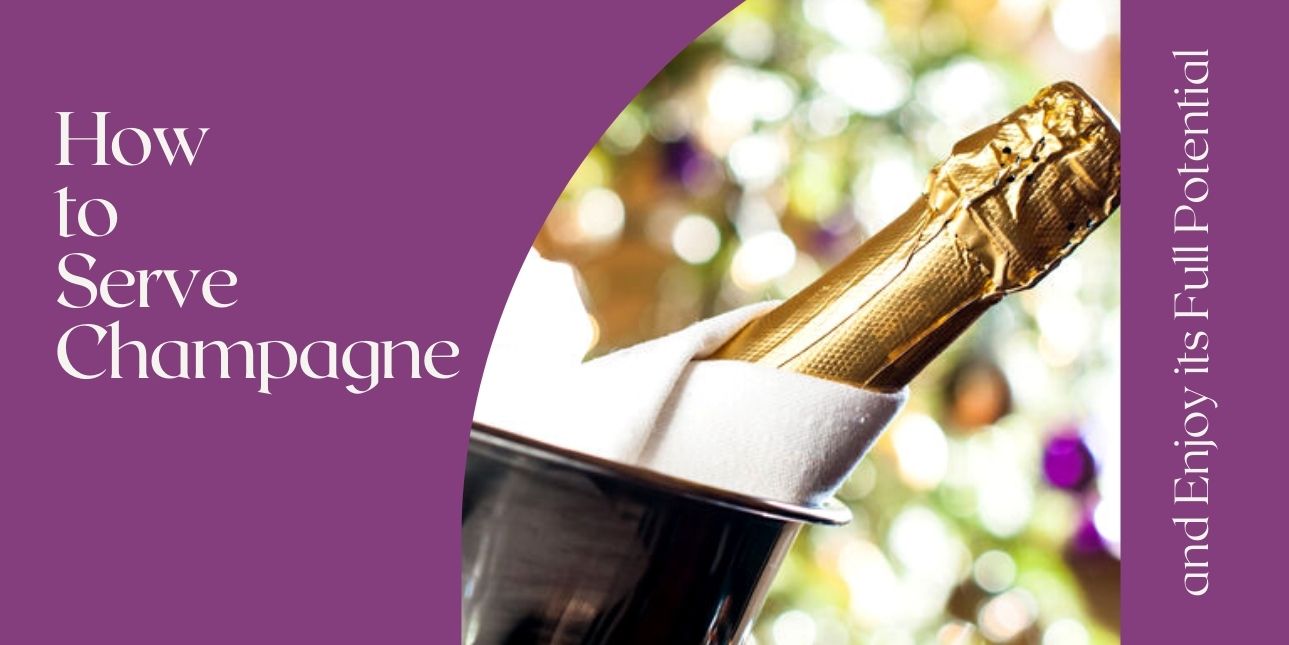
A sophisticated and elegant wine service for guests is critical to the success of any restaurant or bar.
Learning how to serve champagne conveys attention to detail and care for guests’ requirements. Tips on champagne serving not only benefits your business and improves revenue, but will also help servers earn better tips.
Steps for How to Serve Champagne
Serving sparkling wine such as champagne is a sophisticated process. Practice and attention are necessary to master the approach, as champagne is a costly beverage. Your guests expect that certain protocols will be observed when you serve them champagne.
There is only one approach to serve champagne correctly. While there are a few variations, the major processes are fixed and essential. Here is a step-by-step guide to serving champagne.
Gather Equipment Required
A proper champagne service requires:
● Glassware – The thin, elongated profile of a champagne flute showcases the bubbly nature of the drink in an aesthetically pleasing package. A standard wine glass allows guests to swirl the champagne and take in all the exciting aromas.
● Two clean and folded serviettes – One for presenting and opening the bottle, and another left on top of a wine bucket at the table.
● Service tray – Glassware and underliners for service come to the table on a napkin-lined tray. The napkin helps prevent champagne flutes from skidding on the metal service tray.
● Champagne ice bucket and stand – Fill the bucket with half water and half ice from a commercial ice machine. Place the bucket within reach of the host, and cover it with the second serviette after service.
● The champagne bottle – Feel the bottle’s neck and body to make sure it is evenly chilled. If the neck feels warmer, there is a risk that the cork will release from the bottle quickly, and you might lose some of the champagne. Keeping the bottle evenly cold reduces the pressure behind the cork.
Brush Up on Your Champagne Knowledge
Some guests expect you to tell them about the color, taste, and whether the champagne goes well with their dinner. If you know an interesting fact about the bottle, by all means, tell them. Undersell on the bottle’s price if possible. Doing all these things builds trust with the guest, and they will want to return and dine with you again.
Placing Glassware
Bring the glassware out on your lined tray. Carry two underliners as well – one for cork presentation, and the other in case the host wants the bottle on the table and not in the bucket. Convey confidence (which comes with practice) by not looking at the tray as you carry it. Place glasses as consistently as possible on each cover. Remember, handle your glassware by the stems only and move around the table in a clockwise direction, serving guests from their right side.
Bottle Presentation and Opening
Place the first folded serviette under the bottle while presenting it to the host. Repeat the vintage and name of the champagne to ensure you have the correct order. When opening the bottle, safety is important. The average bottle has over 120 pounds per inch pressure pushing against the cork! Injuries from champagne corks are real, so don’t be the next statistic.
A champagne bottle can be opened either:
● In the air – This stance offers maximum control over the bottle. You can easily go to the next option in case the cork is stuck or broken.
● In the bucket – This technique is advisable for servers five feet or shorter.
The Bottle Opening Sequence
Three hours of refrigeration or 30 minutes in a bucket of ice will help reach the optimal temperature for champagne – 50 to 54 degrees Fahrenheit, depending on what you are serving. There is no need to shout “duck” when you follow this method for opening a bottle of champagne:
1. Use a wine key to cut the foil and expose the cage and cork.
2. Place a folded serviette over your bottle’s top, and use the ring on the cage to loosen it.
3. Hold the bottle at a 45-degree angle away from everyone. Place your hand tightly over the serviette and twist the bottle’s bottom back and forth slowly. As the cork comes out, firmly but gently move it to the side and allow pressure to escape in a quiet hiss.
4. Remove the cork from the cage and place it on the underliner nearest the host. Put the cage in your pocket.
5. Wipe the lip and top of the bottle, and pour up to one-and-half ounces for the host to taste. If they approve, pour for guests.
Pouring Etiquette
Pour first for lady guests, then gentlemen, and the host last. If there is a guest of honor, pour their glass after the host has had a taste. Each glass gets at least two pours using a slow, continuous movement. Pour the initial ounces into the glass, let the foam settle, and then pour a second time, filling the glass up to one inch below the top. Make sure that each pour is even.
Pour with the label facing out. You can hold the bottle’s entire bottom when reaching across a banquet to serve, or when refilling glasses at a reception or cocktail party. Use the serviette to catch potential drips. Always have the serviette in your hand.
Completing Service
After serving everyone champagne, ask the host if you can remove the cork from the table. If they say yes, keep it safe in case they change their mind and want to keep it. Ask the host how they want to maintain the bottle’s temperature. If they choose the bucket option, add fresh ice from your full-size ice cube machine. Gently place the bottle in the bucket and drape a clean serviette over it for ice-cold champagne.
When someone else at the table orders a second bottle of champagne, they become the host for the second bottle. The opening procedure is the same as above, and you will serve everyone in their original glasses. The exception to this is when serving prestige or vintage champagne. In these cases, guests should receive a new glass for each bottle. When in doubt, offer the host a fresh glass for each bottle they order.
Considerations Before Serving Champagne in Your Establishment
Champagne is a popular beverage choice for your menu if you are running a bar or plan to open one soon. Here are important factors to consider before serving champagne at the bar.
Choose a Profitable Brand
Make sure you turn a profit by picking brands that offer the best return on investment. When starting, the most expensive brands may not bring in high profits. Choose the most flavorful and best-tasting options. Get in touch with distributors who offer the highest quality drinks and the biggest deals.
Pair Champagne with the Right Foods
For meats, grapes, cheeses and more, offering beverage and food pairings on the menu is important for improving profits and satisfying patrons. Champagne goes with just about everything. Depending on the demand at your establishment, you can leverage pairing items.
Remember, Champagne is a Wine
Like other wines, champagne is made from fermented grapes following similar cultivation techniques. But the champagne production process follows strict guidelines. Direct light can damage the wine’s flavors and aromas, leading to discoloration. Since champagne is a sparkling wine, it nearly always comes in a dark bottle.
Long May the Champagne Flow
Learning how to serve champagne is critical for creating a warm and welcoming atmosphere for your customers. Your guests rely on you to suggest, present, and serve the perfect champagne for their tastes. Proper serving and presentation are critical, and an outstanding experience can generate return business.

